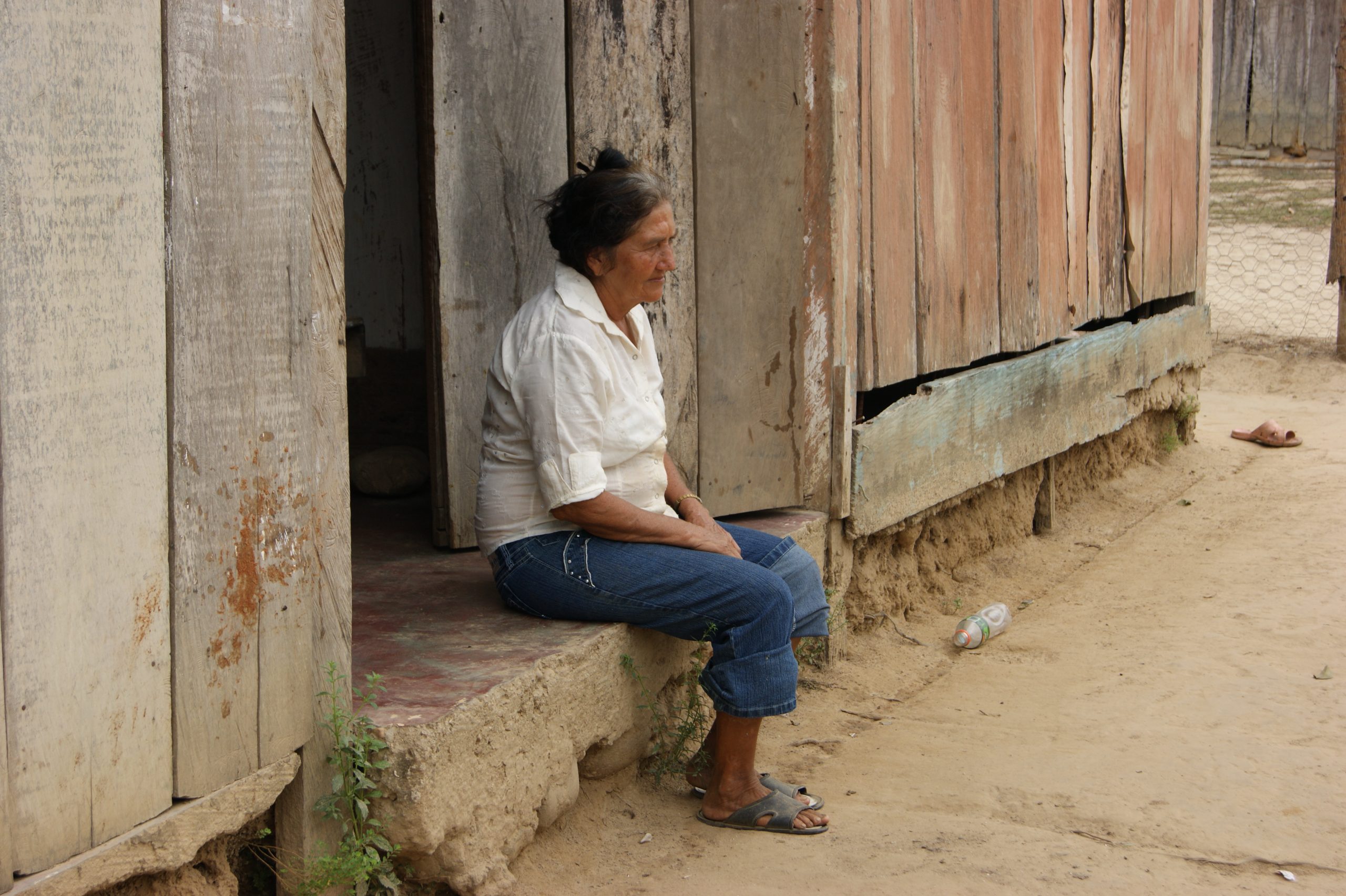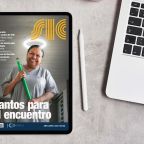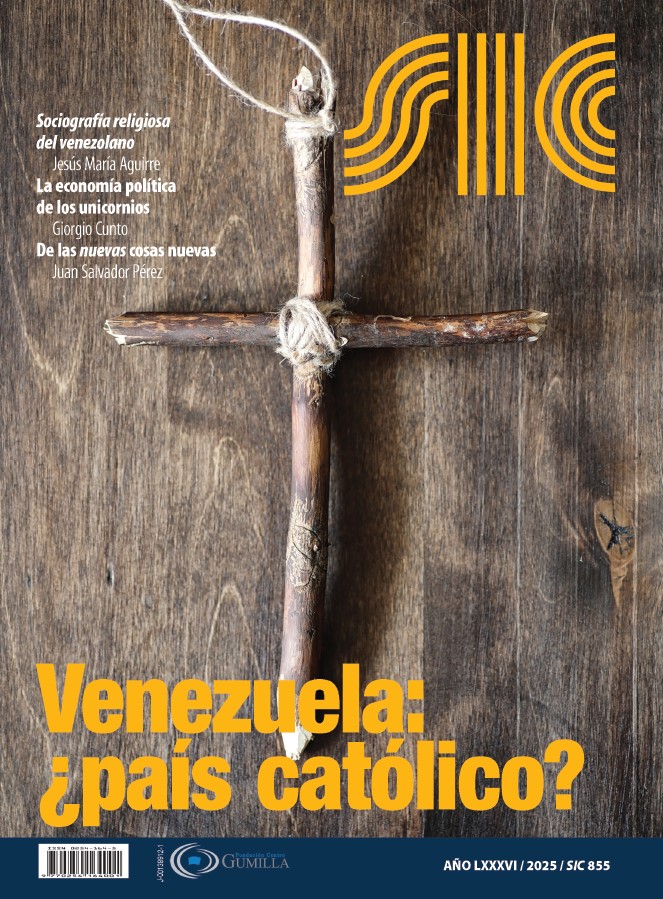Eduardo J. Ortiz F.
 Some time ago was published Thomas Piketty’s book Capital in the Twenty-First Century, an analysis of how income and wealth have been distributed in the world from the 18th century to our days. This is a motive then, to present the preoccupation that other authors have on the growing inequality, some critiques to Pinketty’s conclusions, and a brief allusion to Venezuela’s situation regarding these matters.
Some time ago was published Thomas Piketty’s book Capital in the Twenty-First Century, an analysis of how income and wealth have been distributed in the world from the 18th century to our days. This is a motive then, to present the preoccupation that other authors have on the growing inequality, some critiques to Pinketty’s conclusions, and a brief allusion to Venezuela’s situation regarding these matters.
Although social sciences try to differentiate between the aseptic observation of people’s behaviours and the value judgements about such behaviours, no researcher can fully put into brackets her convictions at the moment of doing her job.
Since the birth of modern economic theory, different authors have adopted certain perspectives to develop their thought thus reaching often contradictory conclusions. Adam Smith and his successors analyzed economic activity from the vantage point of the rising capitalist bourgeoisie; they concluded that the best system was that one encouraging the free development of the forces of supply and demand. Karl Marx observed the same facts from the workers’ perspective and concluded that those who contributed with their work were the biggest losers in the process of production.
And despite Keynesianism and Social democracy tried to bring closer both of these ends during the 20th century, there are certain goals in theory and economic policy that are in constant tension with each other. Is it worth to keep a high unemployment rate to curb inflation? Is it better to import what other countries produce for cheaper, or should we protect national industry despite being less efficient? What national budget lines have to be affected in order to reduce fiscal deficit?
Efficiency and Equity
Another issue that generates a great diversity of views in public opinion is which of the two ends needs more attention when trying to find the balance between efficiency and equity.
I have said that the discussion is mainly held at the level of public opinion because in the conventional economic theory there is strong unanimity in privileging efficiency. In any teaching manual, the problem of inequality tends to occupy just one chapter: it is taught how to measure it and how, in extreme cases, inequality can negatively affect efficiency by making workers be less productive.
The Nobel of Economy Paul A. Samuelson wrote in 1948 the first of these modern manuals. Since the first edition (the 19th was published in 2009, the year he passed) he has maintained an example that he acknowledges is quite shocking but that points out graphically how in politics the person with more votes wins and how in the market he who has more purchasing power is favored (more dollar votes).
[G]oods follow dollar votes and not the greatest need. A rich man’s cat may drink the milk that a poor boy needs to remain healthy. Does this happen because the market is failing? Not at all, for the market mechanism is doing its job –putting goods in the hands of those who have the dollar votes. Even the most efficient market system may generate great inequality.
Most economists don’t dare to be that direct and they opt for the “trickle-down theory.” If we focus on inequality and take from the wealthiest to give to the neediest, we will all end living in poverty, since those who have means will stop investing and creating jobs. Conversely, if investors are stimulated to make economy grow, the resulting well-being will also favor the poorest ones, who would earn higher wages.
Growth and equality
The best way to confirm or reject the “trickle-down hypothesis” is by paying attention to the facts and proving its validity.
Although there are several writings that empirically prove the positive relation between growth and collective well-being, an ulterior issue remains pending. Are the rich more benefited from growth than the poor? If that is case, the growth of the product would improve the life quality of every citizen but would also increase inequality.
Many are the relatively recent contributions warning about the rising global inequality and its negative consequences for growth and development.
Nobel Prize Joseph E. Striglitz published in 2012 a book entitled The Price of Inequality: How Today’s Divided Society Endangers Our Future.
Already in the prologue he faces the tension between efficiency and equity and affirms emphatically that an inequality-generating economy is inefficient. “Unemployment […] is the worst failure of the market, the greatest source of inefficiency, and a major cause of inequality.”
In the rest of the book he accumulates statistics of inequality in various countries of the world but he focuses on the situation of his own country (the United States), where already in 2007 –before the outbreak of the latest crisis– the richer 0,1% had an income 220 times higher than the poorest 90%. The political solutions designed to address the 2008 economic collapse worsen the situation since the richer 1% for instance, appropriated 93% of the additional incomes created in the country between 2009 and 2010.
He criticizes the “trickle-down theory” referring graphically to “the rising tide that didn’t lift all boats.”
It is impossible to detail all the data accumulated in the book’s six hundred pages. We will finish by citing more discouraging statistics. During the last three decades in the United States, 90% of people receiving low wages have increased their incomes in 15% while for the richest 1% this proportion is of 150% and for the most privileged 0,1% the increase is of 300%.
Capital in the 21st Century
But the book on inequality that has become a best seller, and that has received a lot of attention from the press and among specialists, is the one written by Thomas Piketty, professor at the Paris School of Economics. Entitled Capital in the 21st Century, this book evidently winks at Capital, Karl Marx’s most well-known work.
The author begins by highlighting the existent inequality between different nations. In India and sub-Saharan Africa the monthly income per capita ranges from 150 to 250 dollars while in Europe, the United States, Canada, and Japan, it ranges from 2.500 to 3.000 dollars. The world average, close to China’s income, ranges from 600 to 800 dollars monthly.
One of the sources for such inequality is the way in which income is distributed among capital and work. For many decades in developed countries, 70% was destined for work and 30% for capital, but in late years this has been deteriorating in favor of capital.
In Venezuela for instance (and this is not stated by Piketty but by the Central Bank of Venezuela), from 1998 to 2012 (the last year from which we posses data), 68% corresponds to capital remuneration and only 38% to work remuneration.
Moreover, the inequalities within work remuneration are quite significant. We cannot forget that managers also receive a salary. 10% of those with higher salaries receive between 25% and 30% of the total work remuneration, which is the same proportion that receives 50% of the workers with lower salaries.
Regarding capital remuneration, differences are more extreme. The highest 10% normally receives 50% (in some countries even 90%) of the total whilst the lowest 50% only receives between 5% and 10%.
It is also necessary to make a difference between income and wealth. When talking about income, we refer to what a person or a family receives annually. Wealth, on the other hand, includes everything that this person has been accumulating throughout her life or what a family has accumulated throughout various generations. The differences in the levels of wealth are, despite being more difficult to quantify, always much bigger than differences of income.
Some years ago, if we wanted to characterize a very wealthy person, we would have to refer to him or her as a millionaire; but today we already have to talk about billionaires. Do we want to mourn remembering that, if in 2008 Venezuela hadn’t changed the currency to bolívares fuertes, the minimum wage after the last increasing would be of seven million bolívares –which are not enough to live decently?
Forbes magazine points out, Piketty reminds us (talking about dollars), that in 1987 there were 140 billionaires around the world that accumulated 0,4% of the world’s wealth. In 2013 the lucky ones have multiplied tenfold thus reaching a number of 1.400 billionaires with 1,5% of the total private wealth.
The most striking solution proposed by Piketty, and the one that has sparked more controversy among his critics, consists in a significant increase of the taxes for received capital income.
The opposition to this measure would be justified if the increasing of the rate reached such extremes that the so called Laffer curve would become effective, first increasing and then decreasing; this shows that when the rates are moderate, an increment in the rate also increases tax collection, but when fiscal voracity goes beyond a given limit, the capitalist prefers not to invest thus causing the collapse of tax collection.
New Voices of Alarm
On May 21st 2015 the Organisation for Economic Co-operation and Development (OECD), known in the corridors as the club of the rich countries, published a report entitled “In It Together: Why Less Inequality Benefits All.”
According to such report, inequality between the rich and the poor in the OCDE countries has reached its highest levels in three decades. The study points to Chile, Mexico, Turkey, United States, and Israel, as the developed countries with more inequality; this contrasts with the higher wage harmonization of Denmark, Slovenia, Czech Republic, and Norway (Venezuela is not part of the organization).
The richest 10% of the population in the studied countries earns 9,6 times more than the poorest 10%, a proportion that has incremented with respect to the difference 7-1 of the 80s and 9-1 at the beginning of the current century.
In 2012, 40% of the poorest households in the 18 studied countries only had 3% of the wealth while the most favored 10% controlled half of it. The richest 1% owned 18% of the fortune of all the analyzed households combined.
In the short term, these differences can be alleviated through subsidies directed to the poorest sectors. But in the long term it is necessary that everyone can make a living with decent wages, which requires improving the levels of health and education among all population.
It is important to take into account that inequality affects growth in a negative way. It is estimated that the increment of inequality reduced in 4,7% the total product of the partner countries between 1990 and 2000.
What about Venezuela?
If a parent finds out that his child hasn’t shown him the school grades for six months, he will do well suspecting that his tot’s performance is quite deplorable. The Venezuelan government has been hiding for six months essential numbers that would help analyzing the advance of economy. For that reason we will have to rely on other sources.
The World Developments Indicators 2014, published by the World Bank, show us that in Venezuela the richest 10% absorbs 33,2% of total income and the richest 20% accumulates the 49,5% while the poorest 20% only keeps 4,2% and the poorest 10% just 1,2% of such total income. In other words, the richest 10% wins 27,7 times more than the poorest 10%. In 1999 this relation was of 26,2, so according to the World Bank, which collects the data offered by each country, inequality in both ends has lightly increased during the revolution.
A more complete indicator is the Gini index, which takes into account all sectors of the population –and not only the opposite ends. This index had a value of 0,449 in 1999 (within a range from 0 to 1, a higher index means more inequality) and according to the latest data of the World Bank the index is of 0,448; so in this respect we have not improved either.
Regarding poverty, in 1999 it affected 45% of households. According to a study recently published by the Catholic University Andrés Bello (UCAB), the Central University of Venezuela (UCV), and the University Simón Bolívar (USB), 48,4% of households live under the poverty line nowadays.
We could say that recent governments have been more effective in granting subsidies –mainly through missions– than in improving the conditions of education and health or in creating well-paid jobs.
Pertaining to health, it is painful to read about the amount of people dying from chronic diseases due to the lack of medication. On March 22nd, the president of the Venezuelan Pharmaceutical Association informed that the lack of medication was of approximately 60% in Caracas and of 70% in the rest of the country.
In the area of education, various Bolivarian institutions of higher education have been created during the last years. However, they don’t allow its graduates to compete advantageously in the market. For example, the community doctors feel embarrassed and deceived when they go into a hospital and realize that they don’t understand the medical nomenclature to identity certain diseases, that they ignore the basic concepts of pharmacology, and that they are not capable of naming or identifying the most elemental instruments used in surgery.
Regarding employment, and according to Conindustria’s report of the first trimester of 2015, in 2007 there were around 12.000 companies in the country. Now, there are about 5.000 and they are working up to 50% capacity due to the lack of supplies.
Here and everywhere else, when we talk about inequality, almost everything remains still to be done.






